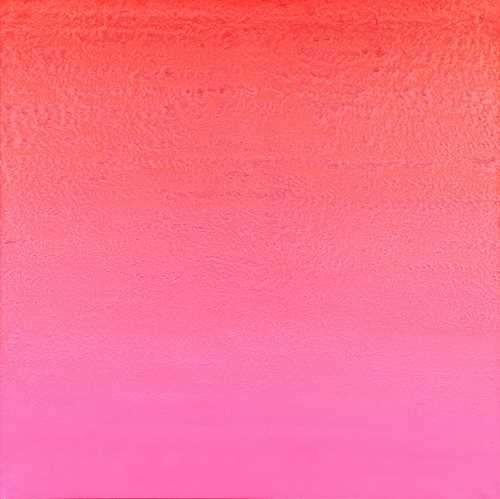
Lot 3496 - A181 PostWar & Contemporary - Saturday, 01. July 2017, 01.30 PM
RUPPRECHT GEIGER
Provenance: Private collection Switzerland.
Literature: Dornacher, Pia/Geiger, Julia: Rupprecht Geiger. Werkverzeichnis 1942-2002. Gemälde und Objekte. Architekturbezogene Kunst, Munich 2003, no. WV 772 (with colour ill.).
Rupprecht Geiger is one of the most important German painters after 1945. His consistent reduction to a simple geometric form, the brilliance of colour and intense contrast, led him to become one of the most radical precursors of colour field painting. Colour as energy field is his subject.
Up to the mid-1960s, he dealt with a central question: which forms will least disturb the effect of a colour, which forms are best suited to colour, which forms correspond best?
“I am of the opinion, that painting is primarily a question of colour, and that everything else is subordinate to that. I am convinced that colours can develop forms. It is not the other way around: that form must come first, in order to become manifest and replenished through colour. Colour presses forward (…) automatically towards a form, a quite definite form each time.” (Rupprecht Geiger quote in: Retrospektive, Akademie der Künste (ed.), Berlin, 1985, p. 66)
The reduction to the form of the rectangle as the only perceptible form, can be seen for example in “792/88” where it is the only space applicable to this colour: the external form and the surface organisation within the frame converge as the only remaining form of the painting. The rectangle of the canvas is the boundary to the surroundings, to the wall, to the space: this creates a minimal pictorial space and at the same time it is the subject of painting itself. In the archetypical form, colour can emerge unaffected. Geiger’s painting is about colour as experience, as light and as energy.
With the introduction of daylight fluorescent paint in 1965, which is applied with a spray gun, Geiger achieved the pure colour surface, which with the illumination or lighting of the colour, becomes a colour light space.
In a way similar to Yves Klein, Geiger finds that the radiation of colour in the pictorial space provides the solution to the contradiction between the painting as homogenous surface, and the deep monochrome pictorial space. He succeeds in creating a deeper penetration into the pictorial space, for example in “792/88”, through the modulation of colour, which he controls superbly. The colour body changes almost imperceptibly from light to dark, from cold to warm, from transparent to dense, from the immaterial to the material. The application develops from thin, to impastoed layers, which leave behind unbroken grains of pigment. The radiance is the immateriality, the pigment is the matter.
Thus, Rupprecht Geiger succeeds in freeing colour from its everyday attachment to form and materiality, making us conscious of it as an independent category. The use of pink and neon pink, as variants of his lifelong motif of red, goes a step further, dispenses with any reference to nature, and is, as Gerhard Mack notes, the “Antifarbe der Natur” (antithesis of natural colour) (in: Rupprecht Geiger, Ostfildern 1994, p. 128). Rather, the colour is abstracted, and bears no relation to the reproduction of nature. The choice of the colour pink seems to fulfil the promise of the red, appears to be the culmination of the last stage of the work, which began with the introduction of the spray technique (1965). If we calmly consider the painting “792/88” we can see how Rupprecht Geiger increases the light value of the colour, and how he creates a refined contrast. The red and pink are intermingled and juxtaposed, and when the pulsating and radiating pigments are imperceptibly mixed into one another, we are immersed in the infinity of the colour light. Red, in all its tones, from crimson, purple, orange and pink is Rupprecht Geiger’s colour.
CHF 80 000 / 120 000 | (€ 82 470 / 123 710)
Sold for CHF 84 500 (including buyer’s premium)
All information is subject to change.


